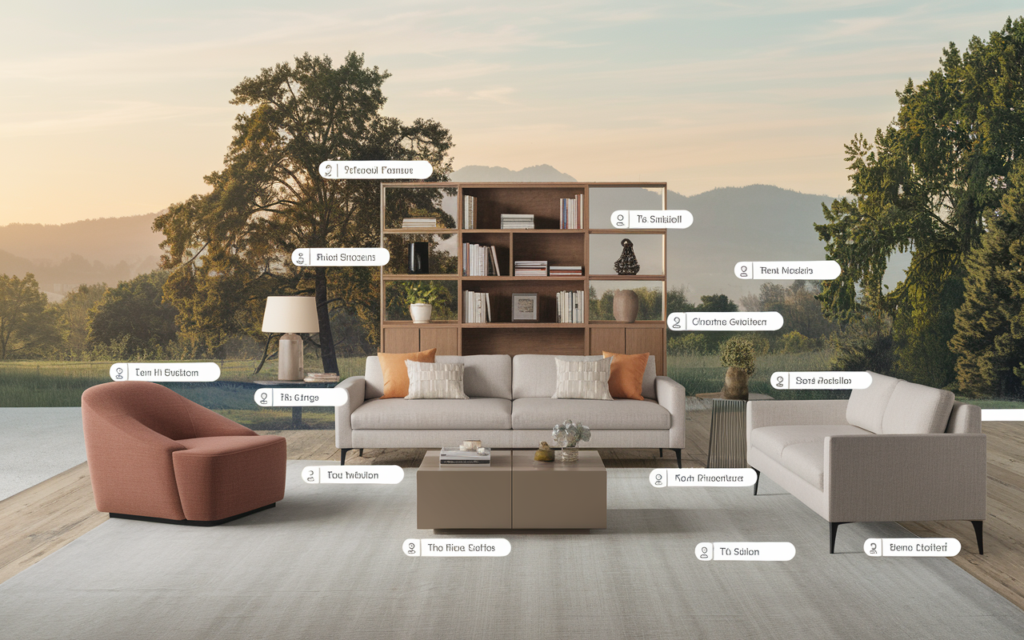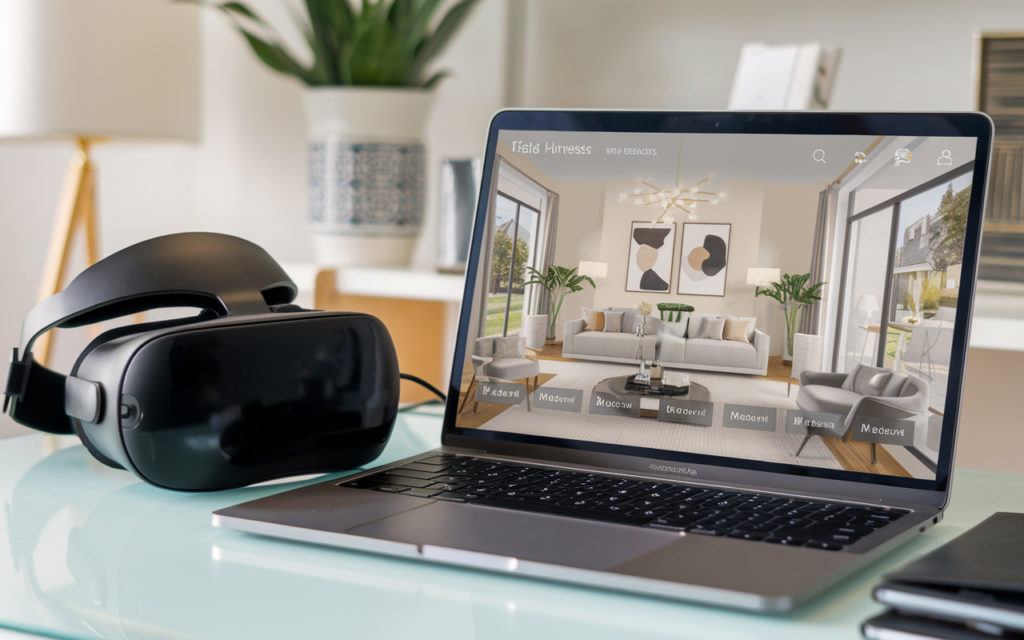A staging business powered by VR technology and integrated with retail sales transforms traditional home staging into a scalable, cost-effective, and revenue-generating model. By showcasing staged homes in virtual environments and linking every item in the scene to purchasable products, this concept appeals to real estate agents, homebuyers, and furniture shoppers alike.
Business Model

1. Virtual Staging with Retail Integration
- Create virtual environments for homes using cutting-edge VR technology.
- Allow real estate agents or homeowners to choose from staging styles (e.g., modern, traditional, eclectic).
- Display every furniture piece and decor item with clickable purchase links embedded in the VR experience.
2. Cost Efficiency
- Lower Staging Costs:
- Eliminate transportation, physical setup, and inventory wear-and-tear.
- Charge a reduced flat fee for virtual staging, benefiting agents and sellers.
- Offset Costs Through Retail Sales:
- Integrate retail potential into the virtual staging, earning additional revenue from furniture and decor sales.
3. Retail-Driven Upside
- Turn every staged home into a shoppable experience:
- Homebuyers can purchase items they see and love directly through the platform.
- Offer incentives like discounts for bulk purchases (e.g., buying the entire room setup).
Implementation Strategy

Step 1: VR and 3D Staging Development
- Create Virtual Templates:
- Develop a library of room templates for different property types (e.g., studios, family homes, luxury homes).
- Design several staging styles (modern, minimalist, traditional, transitional, industrial, etc.).
- 3D Modeling of Furniture and Decor:
- Digitally render every product in the catalog with high-quality 3D models.
- Include accurate dimensions, textures, and colors.
- Interactive VR Experience:
- Use platforms like Matterport or custom VR software to create immersive tours.
- Embed clickable “tags” on furniture and decor with purchase details.
Step 2: Inventory and Retail Integration
- Build or Partner for Inventory:
- Source inventory from wholesalers, furniture brands, or manufacturers.
- Offer direct-to-consumer sales or dropshipping for seamless fulfillment.
- Dynamic Catalog:
- Sync the digital staging inventory with the retail catalog to ensure availability.
- Enable real-time updates for pricing, stock, and new product launches.
- Logistics and Fulfillment:
- Offer delivery and setup services for purchased items.
- Integrate with existing warehousing and delivery infrastructure.
Step 3: Pricing and Revenue Model

- Virtual Staging Fees:
- Flat fee per room staged: $100–$300.
- Discounted packages for full homes or bulk orders.
- Retail Revenue:
- Markup on furniture and decor: 25%–40% profit margin.
- Incentivize package deals (e.g., purchase the full staging set at a discounted rate).
- Subscription Option for Agents:
- Offer agents a subscription to stage unlimited properties virtually.
- Include affiliate commissions for items sold through their listings.
Customer Journey
- For Real Estate Agents:
- Upload property photos or floor plans.
- Select staging styles and receive VR or 3D visuals within 48 hours.
- Share the VR tour with buyers, who can explore the space interactively.
- For Homebuyers:
- View the staged property in VR or on an interactive platform.
- Click on items they like and add them to a shopping cart.
- Checkout for delivery directly to their new home.
- For Shoppers:
- Access staged scenes as a virtual showroom, even if not purchasing a home.
- Explore curated designs and shop entire rooms or individual pieces.
Technology Integration
- Software Platforms:
- Use VR staging platforms like Matterport or iStaging for virtual tours.
- Develop a custom e-commerce interface with product tags integrated into VR.
- Data Management:
- Use inventory management software to sync real-world stock with virtual displays.
- Employ analytics to track the performance of staged items (e.g., top-selling furniture).
- Payment and Fulfillment:
- Integrate with platforms like Shopify or WooCommerce for seamless transactions.
- Automate order fulfillment through warehousing or dropshipping partnerships.
Marketing and Partnerships
- Real Estate Agents and Developers:
- Offer co-branded VR tours for listings with integrated shopping.
- Provide affiliate commissions to incentivize agents to promote the platform.
- Furniture and Decor Brands:
- Partner with manufacturers to feature their products in staged environments.
- Use the platform as an interactive catalog to drive sales.
- Targeted Advertising:
- Use social media and real estate platforms to promote the “shoppable staging” concept.
- Highlight the dual value of selling homes and selling products.
Revenue Projections
- Virtual Staging Revenue:
- Assume 2,000 rooms staged annually at $200/room: $400,000.
- Retail Sales Revenue:
- Average sale: $1,000 per client, with 1,000 customers annually: $1,000,000.
- Affiliate Commissions:
- From agent referrals and homebuyer purchases: $100,000.
Total Impact
This concept reduces staging costs for agents, enhances buyer experiences, and opens a lucrative retail revenue stream. By integrating virtual staging with e-commerce, Elevate Spaces becomes a transformative platform at the intersection of real estate, design, and retail.

Leave a Reply